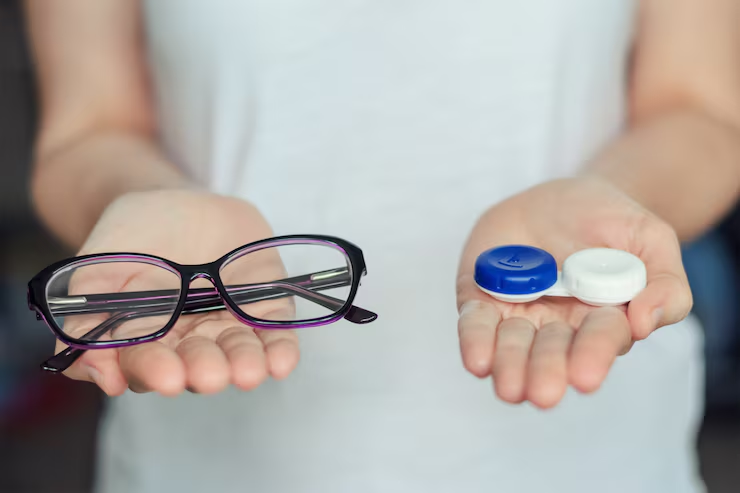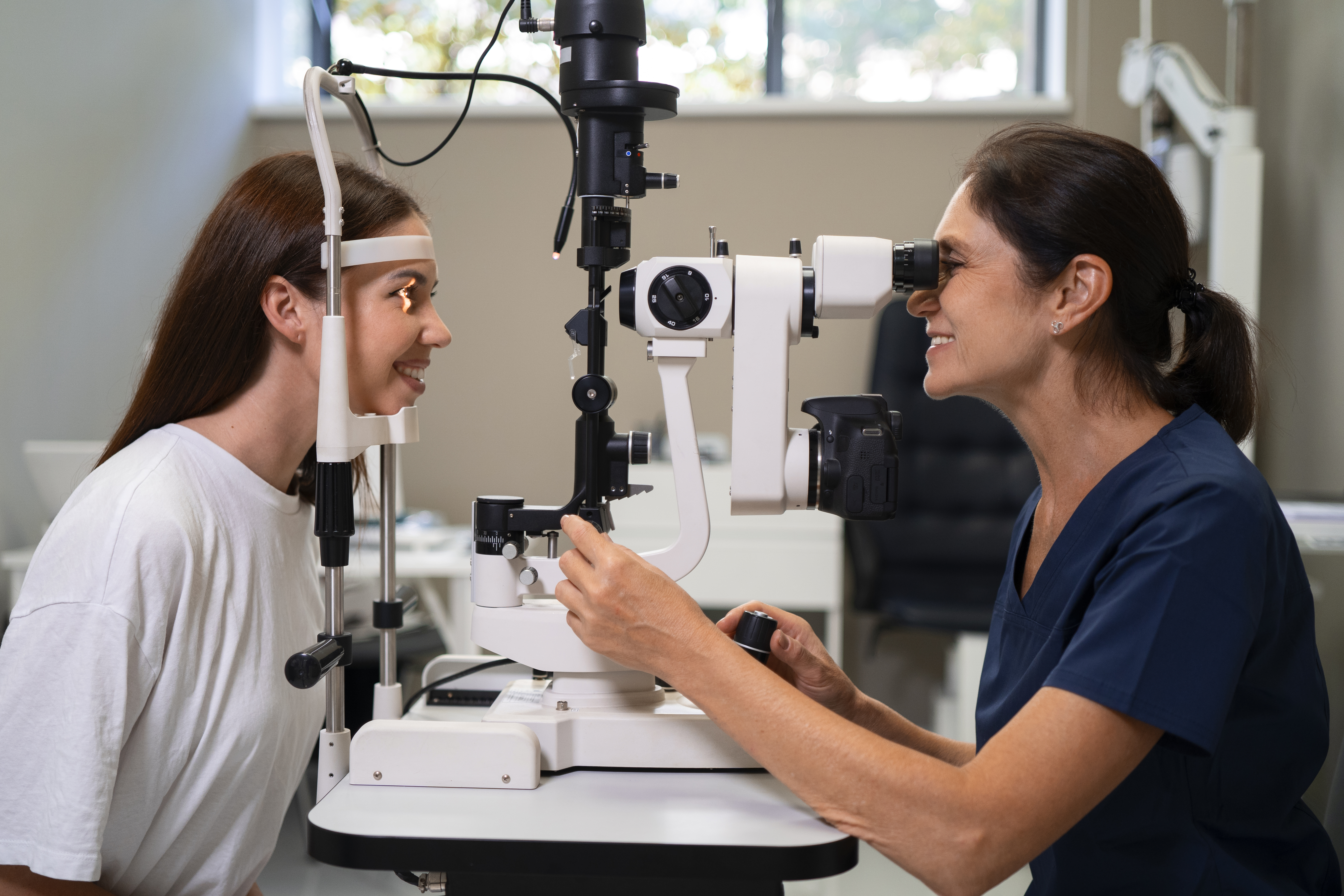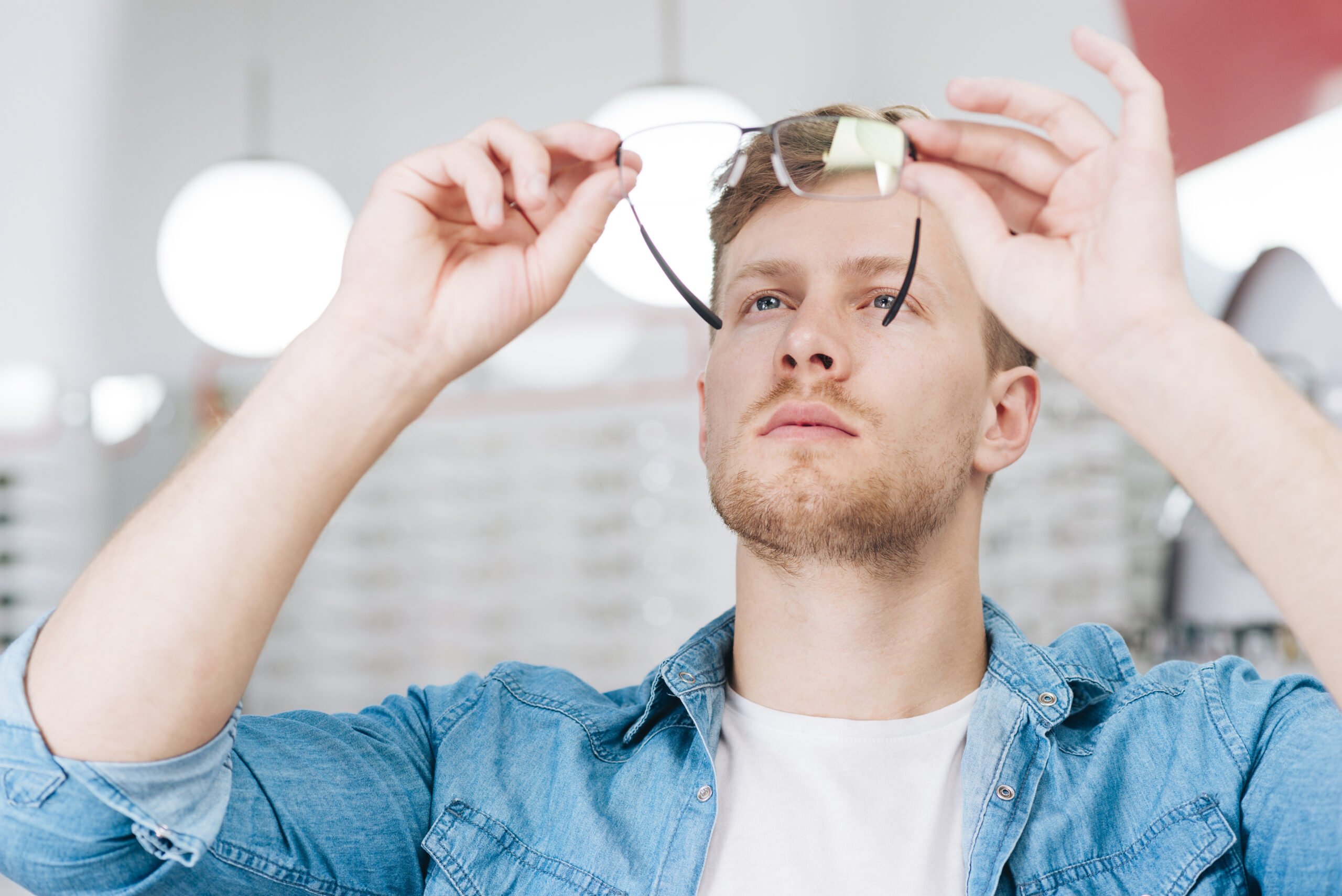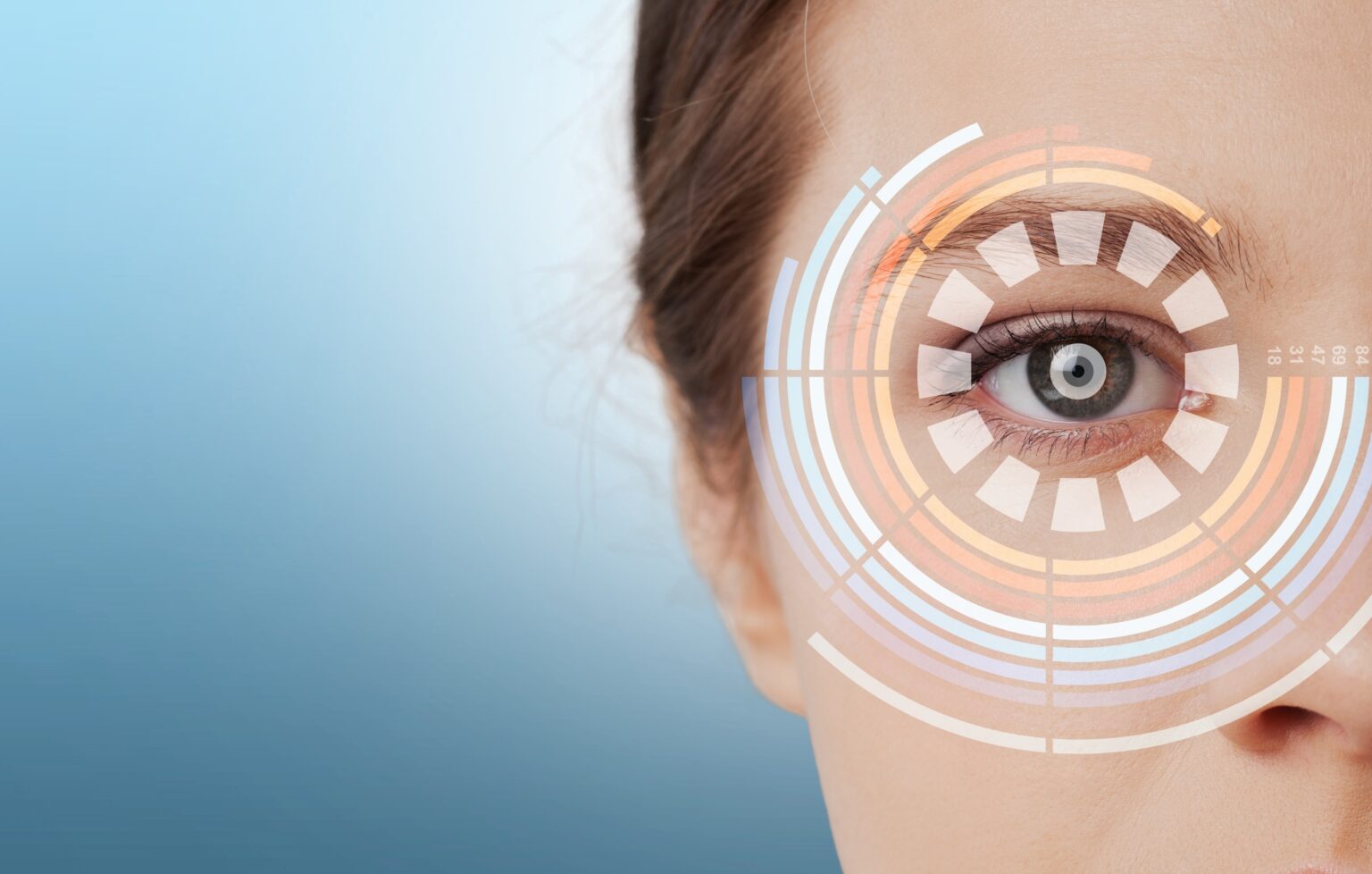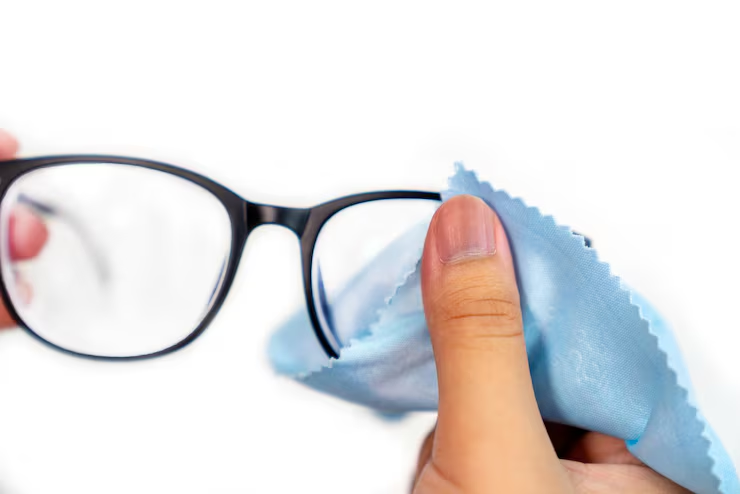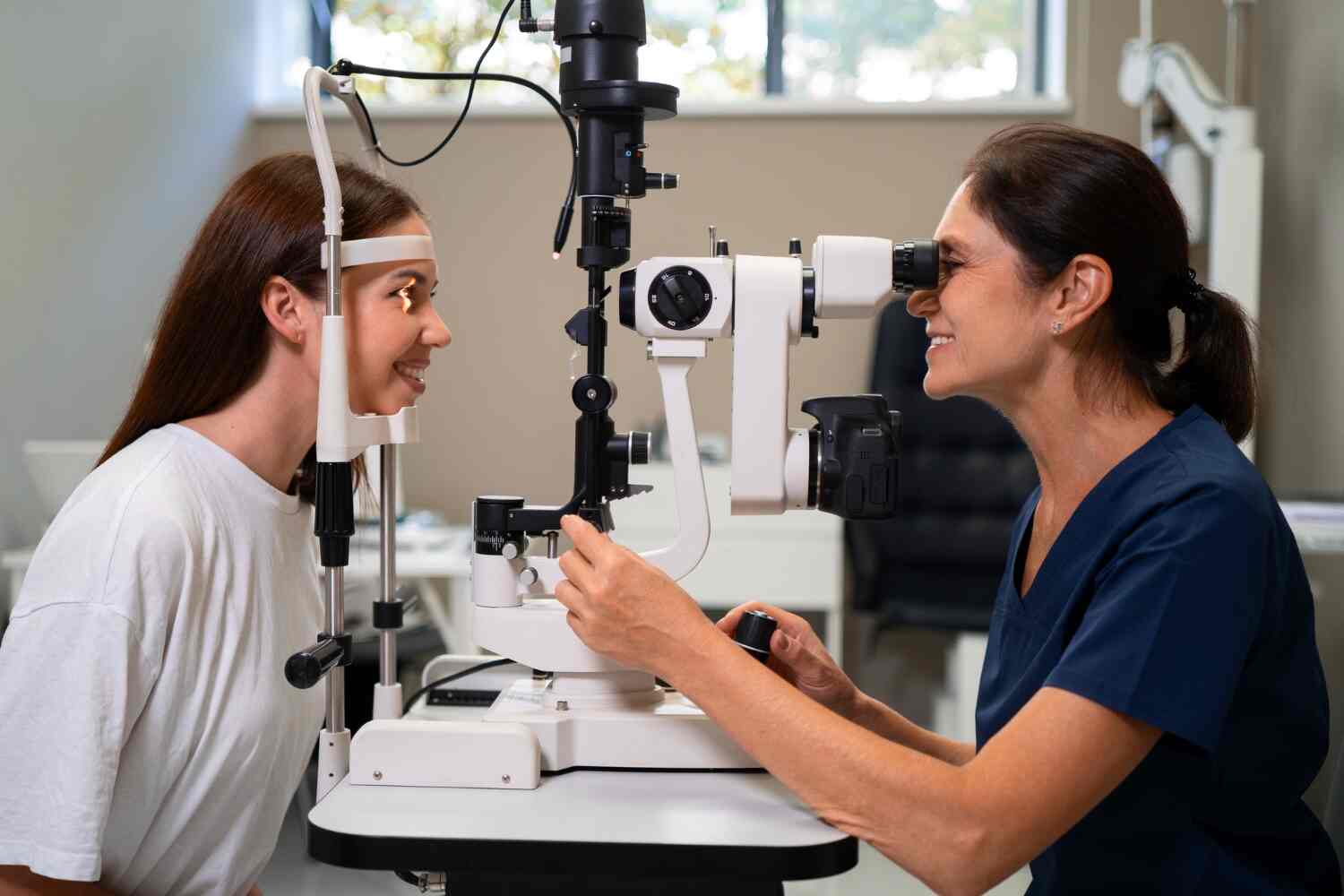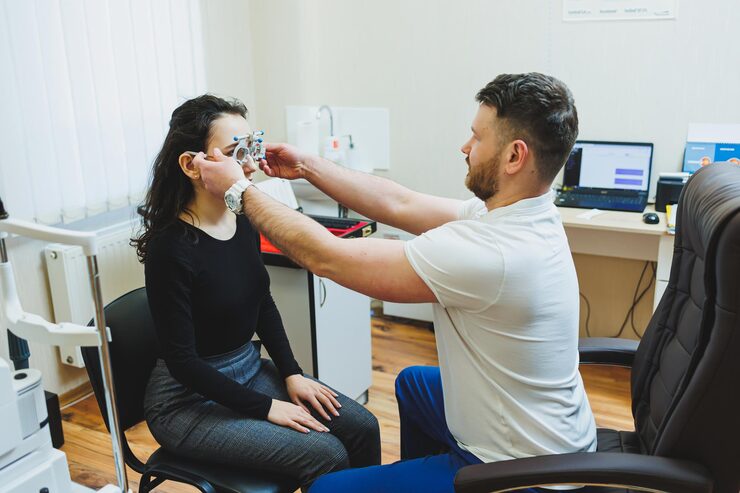Reading glasses are more than just a tool to sharpen your vision—they’re also part of your everyday style and comfort. With so many frame options, lens types, and coatings available, the process can feel a little overwhelming. At Eyemastr, we believe choosing the right pair should be simple, practical, and tailored to your lifestyle. Here’s a guide to help you select the perfect reading glasses: 1. Custom vs. Ready-Made Glasses Eyemastr tip: Custom readers are worth the investment if you want long-term comfort and accuracy. 2. Pick the Right Lens Design Reading glass lenses come in several styles depending on how you use them: Your eye doctor can recommend which option matches your daily activities. 3. Lens Shape & Size Matter 4. Frame Choices: Style Meets Strength Above all, make sure your frames fit your face, nose bridge, and ears comfortably. 5. Lens Materials That Work for You If you’re outdoors often, durability and UV protection should be a priority. 6. Don’t Skip the Coatings Enhancements can extend the life and performance of your glasses: These add-ons may increase cost but are a smart investment in comfort and protection. The right reading glasses don’t just help you see better they enhance your confidence, comfort, and style. At Eyemastr, we believe every pair should fit seamlessly into your life, whether you’re reading a book, working at your desk, or scrolling through your phone. Explore our curated reading eyewear collection today and find the pair that brings clarity with style. FOLLOW US: INSTAGRAM, LINKEDIN
10 Tips to Get Used to Progressive Lenses | Eyemastr
Progressive lenses are a game-changer for anyone dealing with presbyopia or age-related vision changes. Instead of juggling between multiple pairs of glasses, progressives allow you to see clearly at near, intermediate, and far distances—all in one pair. But here’s the truth: adjusting to progressive lenses takes a little patience. At Eyemastr, we’ve helped countless professionals and style-seekers transition with ease. To make your journey smoother, here are 10 proven tips to get used to progressive lenses. 1. Choose a Wider Frame The frame you pick makes a big difference. A wider frame offers more space for the gradual shift between distance, intermediate, and near vision, making the transition easier. 2. Keep Your Lenses Clean Even a tiny smudge can cause distraction. Regular cleaning keeps your vision sharp and helps your eyes adapt faster. 3. Start Indoors First Begin in familiar surroundings. Wearing your progressives indoors allows you to notice distortions safely while your brain adjusts to the new visual experience. 4. Be Extra Careful with Stairs Since progressive lenses can slightly distort peripheral vision, take your time with stairs. Moving your head instead of relying only on peripheral sight can prevent slips. 5. Take Your Time to Adjust Adapting to progressive lenses is like learning a new skill—it takes practice. Activities like reading, cooking, or watching TV at different distances help train your eyes. 6. Stay Consistent Switching between old glasses and progressives slows down adaptation. Commit to your new lenses for the best results. 7. Wear Them as Much as Possible The more you wear them, the faster you’ll adjust. Whether you’re working, relaxing, or gardening, keep your progressives on. 8. Give Your Eyes Breaks If you feel strain, it’s okay to take short breaks. Resting your eyes makes it easier to stay consistent without discomfort. 9. Try Different Environments Gradually After mastering indoor use, move outdoors, into new lighting, or even while driving. Progressing through environments step by step helps build confidence. 10. Stay Connected with Your Optometrist Your journey doesn’t end when you pick up your glasses. If something feels off, don’t hesitate to check in with your eye care provider—they can fine-tune your lenses or give tips for a smoother adjustment. At Eyemastr, we design eyewear that blends precision optics with effortless style, so your transition is as smooth as your vision. Ready to experience clarity at every distance?Explore our progressive collection today at www.eyemastr.com. FOLLOW US: INSTAGRAM, LINKEDIN
PRK vs LASIK: Differences, Recovery & Costs
When people think of laser eye surgery, the first procedure that usually comes to mind is LASIK. But did you know that another vision correction surgery—Photorefractive Keratectomy (PRK)—actually came before LASIK? Both PRK and LASIK are effective treatments for refractive vision issues such as: While both surgeries reshape the cornea to improve vision, the way they’re performed—and the recovery process—differs. For some patients, PRK may be the safer alternative when LASIK isn’t recommended. Let’s break down the differences, benefits, and considerations of LASIK vs PRK. What Happens During PRK? PRK surgery works by removing the thin, outer layer of the cornea (epithelium) before reshaping the tissue underneath with a precise excimer laser. Here’s the step-by-step process: What Happens During LASIK? LASIK uses a slightly different approach: instead of removing the epithelium, the surgeon creates a small flap in it, lifts it, and reshapes the cornea beneath. Step-by-step process: Recovery: PRK vs LASIK Recovery is where the biggest differences show up between these two procedures. PRK Recovery LASIK Recovery Risks and Side Effects Both procedures are considered safe, but as with any surgery, there are potential risks. Possible side effects include: Your surgeon will evaluate your eyes thoroughly to minimize these risks and determine which option is safer for you. Who Is a Good Candidate? You may qualify for LASIK if: PRK may be recommended if: Cost: PRK vs LASIK Costs can vary, but here’s the general difference: While most insurance plans don’t cover elective vision correction surgery, you may be able to use HSA or FSA funds. Some clinics also offer financing options to make the investment more manageable. Pros and Cons at a Glance Procedure Pros Cons PRK Suitable for patients with thin corneas, no flap complications, long-term stability Longer recovery, initial discomfort, higher infection risk in first few days LASIK Quick recovery, less discomfort, vision improves almost immediately Not suitable for thin corneas, flap complications possible, higher chance of dry eyes PRK After LASIK In rare cases, patients may need an enhancement procedure years after LASIK. Performing another LASIK surgery might not be safe, but PRK can often be performed as a secondary procedure. Which One Is Right for You? Ultimately, the choice between LASIK and PRK depends on your eye health, lifestyle, and goals. Both surgeries deliver excellent long-term results, but the best option should always be guided by a professional evaluation. At Eyemastr, we believe your vision is worth the best care and technology available. Always consult with a trusted eye specialist before making your decision. FOLLOW US: INSTAGRAM, LINKEDIN
Best Glasses for Outdoor Lifestyle
Life outdoors is full of energy, movement, and unforgettable views. Whether you’re hiking mountain trails, biking through the city, or spending weekends by the water, the right pair of glasses can make every moment clearer, safer, and more comfortable. At Eyemastr, we know your eyewear should do more than just correct your vision it should match your lifestyle. Here’s a quick guide to finding the best glasses for your next adventure. 1. Start with Your Prescription Your prescription is the foundation. Frames and lenses should not only suit your style but also match your vision needs. Always check that the frame you love can support your prescription to avoid disappointment later. 2. Choose the Right Frame Material Durability matters outdoors. Titanium frames are lightweight, strong, and resistant to bending or corrosion — perfect for an active lifestyle. Memory titanium even bounces back into shape, so you don’t have to worry if your frames take a tumble. 3. Find the Best Fit and Shape Your glasses should work with you, not against you. Rimless or larger frames can maximize your view without blocking your peripheral vision. For sports or high-motion activities, look for wraparound frames that stay secure and protect your eyes from wind, debris, and even bugs. 4. Pick Colors That Work Outdoors Earth tones like greens, browns, and neutrals blend naturally into outdoor environments. Clear frames are stylish but can be harder to spot if dropped. Bright shades may look fun but can attract unwanted attention from insects — something to keep in mind for hikes and camping. 5. Prioritize Comfort and Grip If you’re sweating on a bike ride or climbing uphill, you’ll want frames that stay in place. Adjustable nose pads and a secure fit behind the ears ensure your glasses won’t slip when you’re on the move. 6. Don’t Forget Lens Enhancements The right lenses can make a world of difference outdoors: Your Next Adventure Starts Here The outdoors is calling don’t let your glasses hold you back. With the right frames, fit, and lenses, you can move with confidence and enjoy every view in sharp, comfortable clarity. Explore Eyemastr’s collection to find eyewear built for your lifestyle. Whether it’s a weekend hike or daily commute, your perfect pair is waiting. https://www.instagram.com/p/DOxbF_CDsiH/FOLLOW US: INSTAGRAM, LINKDIN
How Often to Change Glasses | Eyemastr Guide
When it comes to taking care of your eyes, regular check-ups and keeping your prescription up to date are just as important as choosing the right pair of glasses. But one question many people have is: how often should you really replace your glasses? The answer isn’t the same for everyone. Your prescription, eye health, lifestyle, and even your personal style all play a role. On average, eye doctors recommend an exam every 1–2 years to make sure your lenses are still working for you. But there are signs you can watch out for that may mean it’s time for an update sooner. Why Updating Your Glasses Matters Wearing glasses that don’t match your current vision can cause blurred sight, eye strain, and even headaches. Old or damaged lenses may also make everyday tasks—like reading, driving, or working on screens—more challenging. Beyond health, glasses are part of your personal style. Frames wear out over time, and technology in lens coatings and designs continues to improve. Updating your glasses means you’ll not only see clearly but also look and feel your best. Signs It’s Time for New Glasses Even if it hasn’t been two years, here are key signs you should consider replacing your glasses: The Average Lifespan of Glasses Most glasses last 2–3 years, but that can vary. Lenses and frames are durable, yet daily wear, prescription changes, and lifestyle factors can shorten their lifespan. That’s why regular eye exams are essential—not just to check your prescription, but also to keep your eye health in check. FAQs About Changing Glasses Do I really need new glasses every two years?Not always. It depends on your vision needs and comfort level. Some people may go longer, while others need updates sooner. Can glasses lose effectiveness?The glasses themselves don’t—but your eyes and prescription can change. What if my vision changes every year?Some people’s eyesight shifts faster than others. If this happens to you, it’s important to keep up with regular exams and lens updates. How can I make my glasses last longer?Handle them with care, clean them with proper solutions, and always store them in a protective case. Your glasses should do more than correct your vision—they should keep you comfortable and reflect your style. If you’re noticing blurred vision, headaches, or simply feel like your frames no longer fit your personality, it may be time for a change. At Eyemastr, we believe updating your glasses isn’t just about clearer vision—it’s about confidence, comfort, and keeping up with you. ✨ Explore Eyemastr frames today and find the pair that’s right for you. FOLLOW US: INSTAGRAM, LINKEDIN
Future of Eye Care: Top Trends Ahead
The way we see the world is changing not just through stylish frames and lenses, but through groundbreaking innovations in eye care itself. Ophthalmology is advancing faster than ever, introducing technologies and treatments that promise sharper vision, earlier diagnoses, and better outcomes for patients everywhere. At Eyemastr, we believe in celebrating not only eyewear but also the science that protects and preserves vision. Here’s a closer look at the most exciting trends shaping the future of eye care. Artificial Intelligence in Diagnostics Artificial Intelligence (AI) is transforming eye health. With AI-powered tools, doctors can detect conditions like diabetic retinopathy, glaucoma, and age-related macular degeneration earlier than ever before. These systems analyze retinal images with incredible precision—often catching what the human eye might miss. Why it matters: Early detection saves sight. AI brings screening to larger populations, including underserved regions, preventing avoidable vision loss through timely care. Gene Therapy and Personalized Medicine Gene therapy is opening doors for patients with inherited retinal diseases (IRDs) like retinitis pigmentosa. Recent breakthroughs in targeted genetic treatments mean therapies can be designed for each individual’s unique DNA profile. Why it matters: Personalized medicine represents a future where treatment isn’t one-size-fits-all, but tailored for maximum effectiveness and hope. Next-Level Cataract Surgery Cataract surgery is already one of the safest procedures worldwide—but it’s getting even better. From femtosecond lasers to robotic-assisted surgeries and advanced intraocular lenses (IOLs), the results are clearer, faster, and more precise than ever. Why it matters: These innovations give patients improved visual outcomes, shorter recovery times, and in some cases, freedom from glasses. Teleophthalmology The pandemic accelerated digital health, and eye care was no exception. Teleophthalmology now allows patients to receive consultations, screenings, and follow-ups online. Why it matters: Remote care makes eye health accessible to people in underserved or remote locations—bridging gaps in healthcare access. 3D Printing in Eye Care From custom corneal implants to personalized surgical tools, 3D printing is making tailored care a reality. This technology is paving the way for more precise procedures and patient-specific solutions. Why it matters: Personalized tools and implants mean better surgical outcomes and more comfortable care. Regenerative Medicine Stem cell research is giving hope where treatments were once limited. Scientists are exploring ways to repair or replace damaged retinal cells, offering possibilities for conditions like glaucoma and macular degeneration. Why it matters: Regenerating eye tissue could restore vision to millions—redefining what’s possible in eye care. Wearable Eye Health Technology Smart contact lenses and sensors are more than futuristic gadgets—they can monitor intraocular pressure, track blood sugar levels through tears, and detect early signs of glaucoma. Why it matters: Continuous, real-time monitoring helps patients and doctors stay ahead of chronic conditions. Virtual & Augmented Reality in Eye Care From training surgeons with simulated procedures to helping people with low vision navigate daily life, VR and AR are stepping into eye care in powerful ways. Why it matters: These tools enhance professional training while improving quality of life for patients. The Future Looks Bright The innovations shaping ophthalmology today are creating a tomorrow where vision care is smarter, more precise, and more accessible. At Eyemastr, we’re inspired by these advancements because protecting your eyes goes hand-in-hand with celebrating the style and clarity that define who you are. FOLLOW US: INSTAGRAM, LINKEDIN
Travel Tips for Glaucoma Medications
Traveling with glaucoma doesn’t have to feel overwhelming. With a little preparation, you can keep your eye health routine on track and enjoy your trip stress-free. Whether you’re flying overseas, road-tripping, or heading on a short getaway, here are some practical tips to make traveling with glaucoma medications simple and worry-free. Keep Medications Accessible Always keep your glaucoma medications in your carry-on bag, not checked luggage. That way, even if your suitcase is lost or delayed, you’ll have what you need with you. Pro tip: Bring more than enough medication for your trip. Unexpected delays or cancellations happen, and extra supply ensures you don’t miss doses. TSA and Airport Security Guidelines Good news — the Transportation Security Administration (TSA) allows prescription medications in carry-on bags, including liquids. Here’s what to know: If you’re traveling internationally, carry a doctor’s note or prescription copy — some countries may require documentation. Storage and Comfort While Traveling ALSO SEEL: Ophthalmology Dubai | Advanced Eye Care Managing Time Zones Changing time zones? Don’t stress. You have options: The key: maintain consistent intervals between doses — don’t double up. Set Reminders to Stay on Track Travel routines can easily throw off your schedule. Try these simple tools to stay consistent: If you’re juggling multiple prescriptions, ask your eye doctor about ways to simplify your regimen while traveling. It may sound obvious, but losing your glaucoma drops can cause major stress during travel. Always pack a backup supply, store them safely, and keep them within reach. Safe travels — and remember, with a little planning, your eye care routine doesn’t have to take a vacation. ✨ Eyemastr Tip: Protecting your eyes goes beyond medication. Stay sun-safe with quality sunglasses designed for comfort, UV protection, and effortless style perfect for every journey. FOLLOW US: INSTAGRAM, LINKEDIN
How to Clean Glasses Safely
Your eyeglasses do more than sharpen your view of the world. They are part of your style, your daily routine, and your confidence. But few things are more frustrating than smudged lenses, greasy nose pads, or grit stuck to your frames. Beyond the annoyance, dirty glasses can actually cause eye strain, headaches, and even harbor bacteria around sensitive areas like your eyes and nose. That is why building a simple cleaning habit into your routine is essential. At Eyemastr, we believe your glasses deserve the same care as any other accessory you wear every day. Here is a simple, no-stress guide to keeping them spotless and long-lasting. How to Clean Your Glasses Lenses Crystal clear lenses mean crystal clear vision. Cleaning does not have to be complicated. Just follow these quick steps: What You Will Need Steps Tip: If it takes you more than 20 seconds, you are overthinking it. How to Clean Your Frames Frames often get overlooked, but they are in constant contact with your skin, meaning they collect oils, sweat, and bacteria. Cleaning them keeps your glasses looking sharp and your skin healthier. Steps Do not skip this step. Buildup on nose pads can even lead to skin irritation or breakouts. What Not to Use on Your Glasses Protect your investment by avoiding these common mistakes: When to Get a Professional Cleaning Sometimes, your glasses need a little expert care. If you notice: …it is time to stop by your optometrist or eyewear retailer. Many offer professional cleaning, sometimes free. How to Store Your Glasses The way you store your glasses is just as important as cleaning them. The Eyemastr Takeaway Making glasses care part of your daily routine means clearer vision, longer lasting frames, and fewer skin and eye irritations. A quick cleaning today keeps your style sharp tomorrow. Keep them clean. Keep them clear. Keep them Eyemastr. FOLLOW US: INSTAGRAM, LINKEDIN
Ophthalmology Dubai | Advanced Eye Care
Dubai has become a global hub for world-class medical care, and ophthalmology in Dubai stands out as one of the city’s fastest-growing specialties. With advanced facilities, internationally trained specialists, and cutting-edge technology, patients can access some of the finest eye care solutions in the region. Whether you’re considering LASIK surgery, cataract treatment, or specialized eye disease management, Dubai offers exceptional care tailored to every patient’s needs. Why Dubai is a Leading Destination for Ophthalmology Dubai’s rise as a medical tourism hotspot has placed its ophthalmology services at the forefront of innovation and patient care. Here’s why people from around the world choose Dubai for their eye health: ALSO SEE: Tonometry Test: Eye Pressure Check for Glaucoma Common Eye Conditions Treated in Dubai Ophthalmologists in Dubai address a wide spectrum of eye conditions, including: Vision Correction Procedures Available in Dubai Dubai’s clinics offer advanced solutions to improve and restore vision: Choosing the Right Ophthalmology Clinic in Dubai When selecting a clinic, patients should look for: A trusted clinic doesn’t just treat eye problems—it helps patients achieve healthier vision and a better quality of life. Your eyes deserve the best care, and ophthalmology in Dubai combines global expertise with state-of-the-art technology to deliver outstanding results. From routine checkups to advanced surgeries, Dubai’s eye specialists provide treatments that help you see more clearly and live more fully. If you’re considering LASIK, cataract surgery, or specialized eye care, exploring Dubai’s ophthalmology services could be the key to restoring and protecting your vision for years to come. FOLLOW US: INSTAGRAM, LINKEDIN
Tonometry Test: Eye Pressure Check for Glaucoma
A tonometry test, often called an eye pressure test, measures the pressure inside your eyes, known as intraocular pressure (IOP). Tracking IOP is crucial for diagnosing and managing conditions like ocular hypertension and glaucoma, both of which can damage the optic nerve and affect vision if not detected early. Why Eye Pressure Testing Matters Types of Tonometry Tests What to Expect During the Test Preparation: Procedure: Normal Range:Eye pressure typically falls between 10–21 mmHg. Values outside this range may indicate risk of glaucoma or other eye conditions. How Often Should You Get Tested? Takeaway: Protect Your Eyes with Regular Pressure Checks Tonometry is quick, painless, and one of the most effective ways to safeguard your vision. Regular eye pressure screenings help detect glaucoma early and keep your eyes healthy for years to come. At Eyemastr, we believe that prevention is the key to lasting eye health. If you’re due for a check-up or have risk factors like age, family history, or eye conditions don’t wait. Book your comprehensive eye exam today and take control of your vision health. FOLLOW US: INSTAGRAM, LINKEDIN


